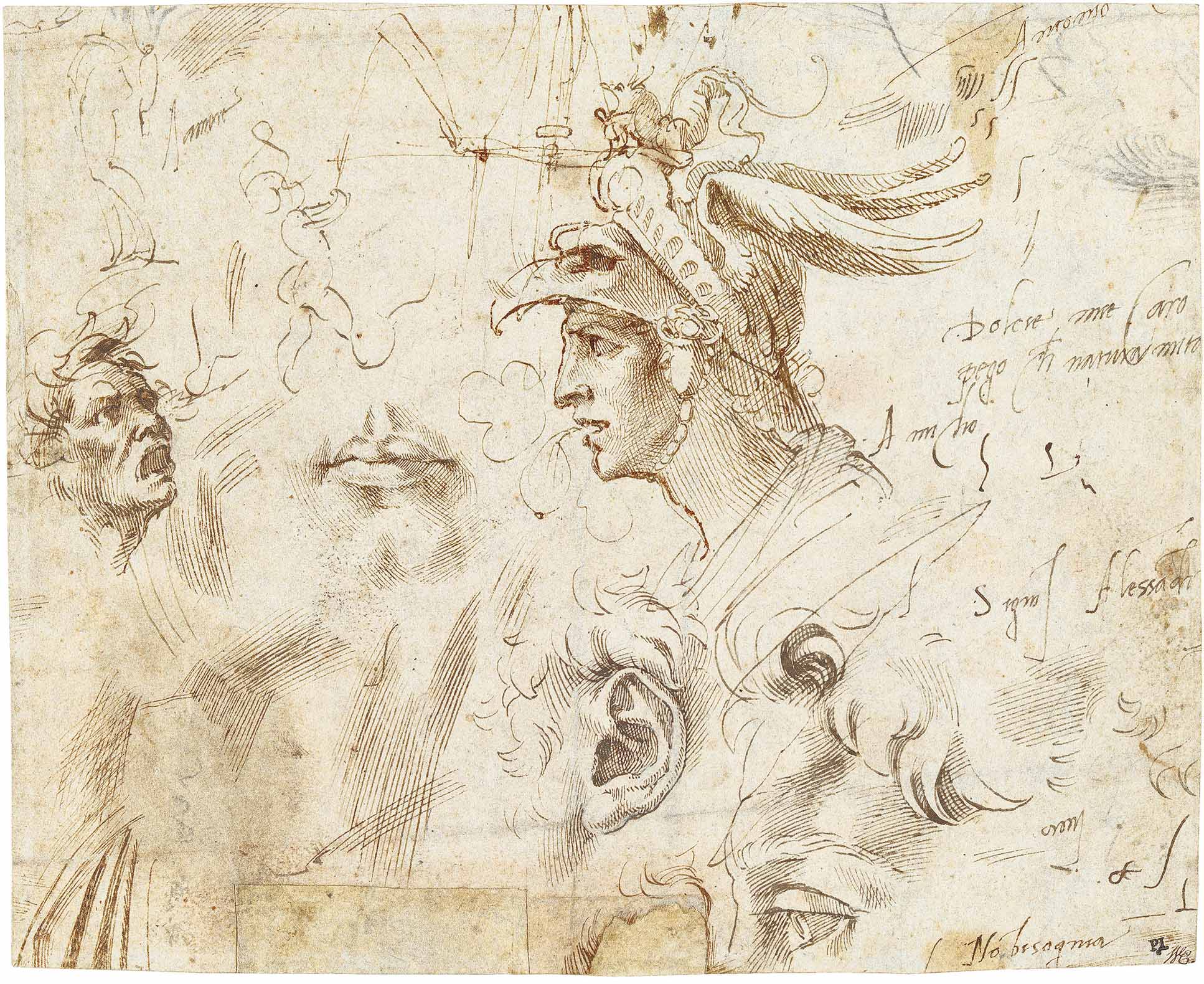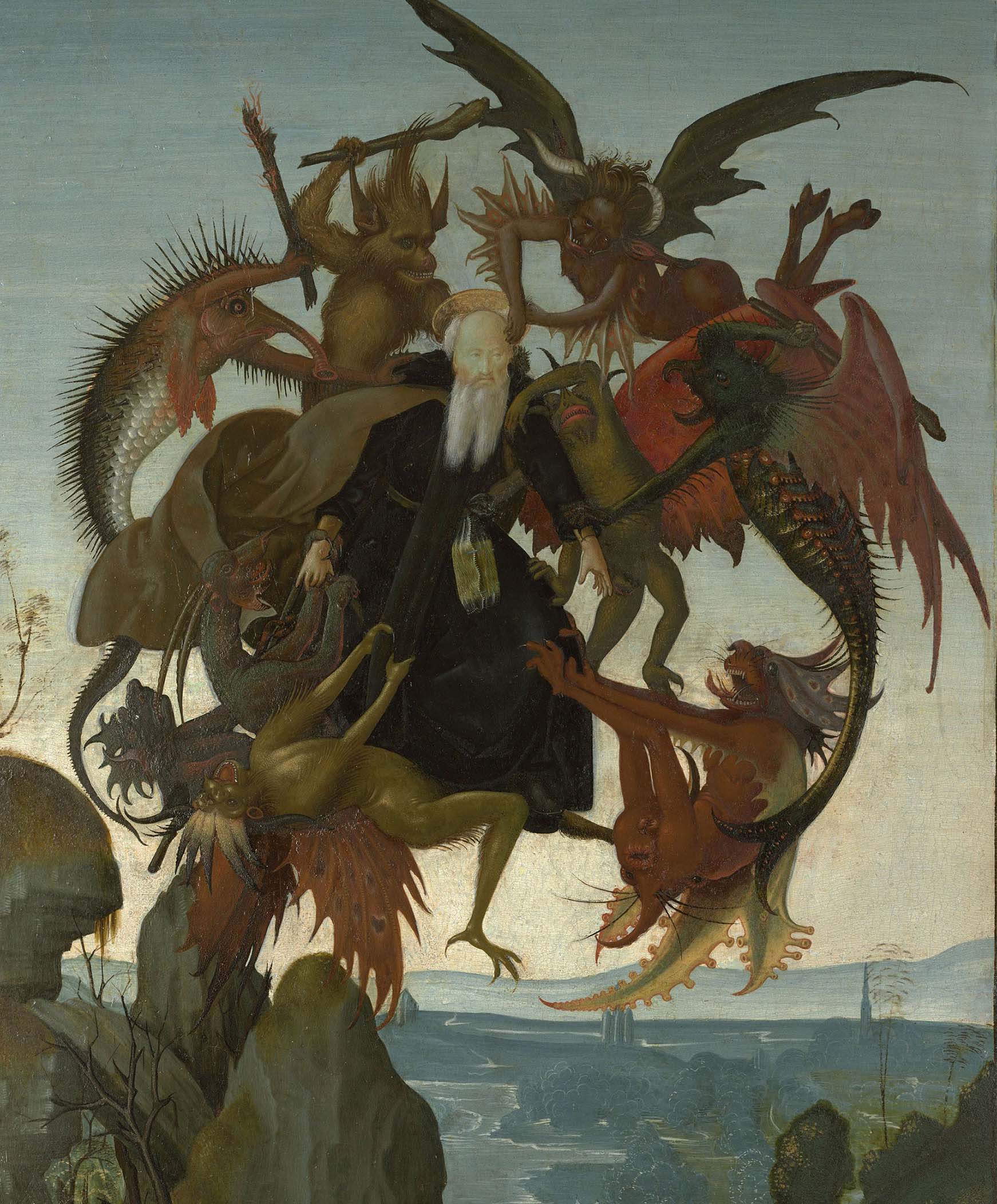The once-in-a-lifetime exhibition, sponsored by Morgan Stanley, gathers 133 drawings, and other works, that capture the genius and vision of the Renaissance master.
Few works of art inspire the kind of awe you might feel standing before the colossal perfection of Michelangelo's David in Florence, or gazing up at the wonder of the Sistine Chapel's frescoed ceiling in the heart of the Vatican. They define the essence of monumental art and genius.
It is not merely the work on paper that we are witnessing, but also the larger creative impulses of the artist.
Yet, to get into the mind of the man behind the inspiration, perhaps nothing comes closer than his drawings. "It's as if the viewer were standing over Michelangelo's shoulder and watching him think on the page," says Dr. Carmen Bambach, Curator of Drawings and Prints at The Metropolitan Museum of Art and the organizer of the exhibition "Michelangelo: Divine Draftsman and Designer."
"It is not merely the work on paper that we are witnessing, but also the larger creative impulses of the artist," says Bambach, who spent the past eight years researching and assembling the more than 200 works by Michelangelo Buonarroti (1475–1564) and his contemporaries from some 50 public and private collections spread across the U.S. and Europe. The exhibition in New York (Nov 13, 2017 – Feb 12, 2018), sponsored by Morgan Stanley, includes 133 of Michelangelo's drawings, many of which have never been displayed side by side. Some have never before been seen in public.
Take a look at his Studies for the Libyan Sibyl, a sketch for a painting that adorns the Sistine ceiling. You can trace the artist’s hand using red chalk to flesh out the musculature of his subject and the signature contortion of the figure, the weight of which will focus on the stretched articulated toes of the left foot. He draws that limb three different ways to precisely capture the moving form and the force briefly at rest in those digits.

The way Michelangelo saw everything with the eye of a sculptor shows in the ubiquitous cross-hatching he used to flesh out arms, torsos, legs and fabric—bringing volume, tension and fluidity to flat surfaces that often preceded his hammer and chisel shaping of marble into vivid sculptures, such as the Young Archer, one of three Michelangelo sculptures in the exhibition.
Art and Patronage
Together, the drawings exemplify not only Michelangelo's artistic mastery but also the audacity of his creative thinking at the peak of the Renaissance (14th to 17th century). The era characterized a "rebirth" of culture, especially in the Italian city-states, such as Florence, where both Leonardo da Vinci and Michelangelo flourished under the patronage of the Medici, at the time, one of Europe's most powerful financial families.
Indeed, art and patronage formed a symbiotic relationship. Patrons, such as the Medici, flowed their wealth and influence into the creation of public works, from the construction of architectural wonders like Brunelleschi's Dome for Florence Cathedral to the gigantic statue of David before the gates of the city's town hall. Meanwhile, in Rome, a succession of popes would bring the not inconsiderable resources of the Vatican to commission artists such as Michelangelo and Raphael to create some of the finest works of the time.
Today, art has many avenues of expression, from personal webpages and online galleries to private collections and public institutions. The Met for one has been dedicated to supporting all aspects of the arts and making it available to educate and inspire successive generations of visitors for nearly 150 years.
"Morgan Stanley is proud to be a sponsor of Michelangelo at the Met, both of which embody a culture of creativity and dedication to excellence," says Audrey Choi, Chief Marketing Officer and Chief Sustainability Officer at Morgan Stanley. "As a financial company with its own history of service and a culture of delivering creative capital to our clients, many of which continue to change the world today, we're excited to be a part of this celebration of Michelangelo and his incomparable art."
Precocity to Visionary
At the age of 13, Michelangelo's father, Lodovico, gave up on a practical line of work for his child and apprenticed him to the Florentine painter Domenico Ghirlandaio. Michelangelo's earliest painting,Torment of Saint Anthony, is included in the exhibition, demonstrating his precocious talent.

He never looked back.
Throughout his life and career, Michelangelo sketched, even though he thought of himself foremost as a sculptor. Indeed, he signed many of his letters from Rome with the moniker "Michelangelo, Sculptor in Rome." Those letters, to his father and younger brothers, mention nothing of his approach to his work or his artistic vision. Instead, he worries about whether he can pay for the blocks of Carrara marble he has ordered, or the wages of his assistants and workmen. He calculates the sums that he is sending home to help his father and brothers with their finances, and counsels them on how to best make use of it.
It's only through the drawings that we can glimpse how Michelangelo in his own time had become the quintessential Renaissance man, as much an engineer and architectural draftsman as he was a painter, a sculptor and, in these designs and drawings, a visionary thinker for all time.



